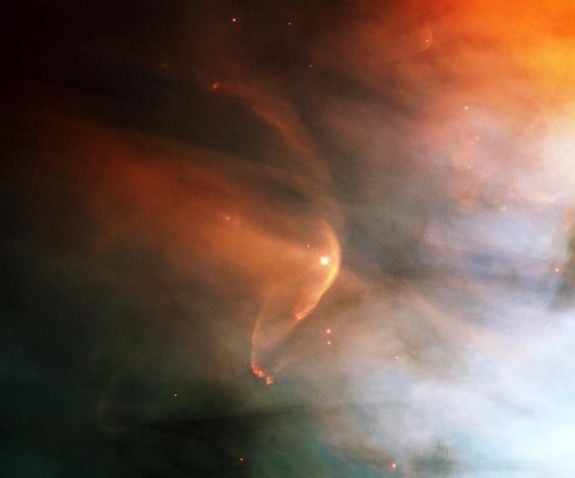For the First Time, NASA Took a Photo of the Sun’s Tail
Stretched by the interstellar medium, the Sun’s tail stretches far behind us
/https://tf-cmsv2-smithsonianmag-media.s3.amazonaws.com/filer/2013071111402407_11_2013_heliotail.jpg)
Yesterday we wrote about how the Earth is awash in the solar wind, charged particles that flow from the Sun and interact with everything in their reach. When the aurora light up the poles, that’s the solar wind. When people talk about the Voyager probes ‘leaving the solar system,’ they’re talking about the edge of the reach of the solar wind.
Solar wind particles can stream from the Sun at speeds of more than two million miles per hour. When these particles hit the Earth, they push against our planet’s magnetic field—squashing it in the front and stretching it into a long tail in the back. The solar wind does this to all the other things in the solar system with a magnetic field, too—the tail of Jupiter’s magnetic field stretches up to 304 million miles. But the Sun’s magnetic field is being pushed as well, and for the first time researchers with NASA have taken a photo of the Sun’s stretched out tail. It may not look like much, but science is often just a bunch of colored blotches:

As the Sun orbits the center of the Milky Way, it passes through what’s known as the interstellar medium, a mélange of dust and gas and cosmic rays. Like a ship passing through the ocean, the Sun’s passage through the interstellar medium causes the Sun’s magnetic field to build up in front of the solar system, and to sweep the Sun’s magnetic field back in a long tail behind it. According to NASA, though we’re learning a lot about the Sun’s magnetic field because of a relatively new satellite known as the Interstellar Boundary Explorer, we still don’t know how far the Sun’s tail may be. NASA has more detail on how they took their photo:
More from Smithsonian.com:
When the Sun Gets Violent, It Shoots Antimatter at the Earth
/https://tf-cmsv2-smithsonianmag-media.s3.amazonaws.com/accounts/headshot/smartnews-colin-schultz-240.jpg)


/https://tf-cmsv2-smithsonianmag-media.s3.amazonaws.com/accounts/headshot/smartnews-colin-schultz-240.jpg)